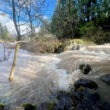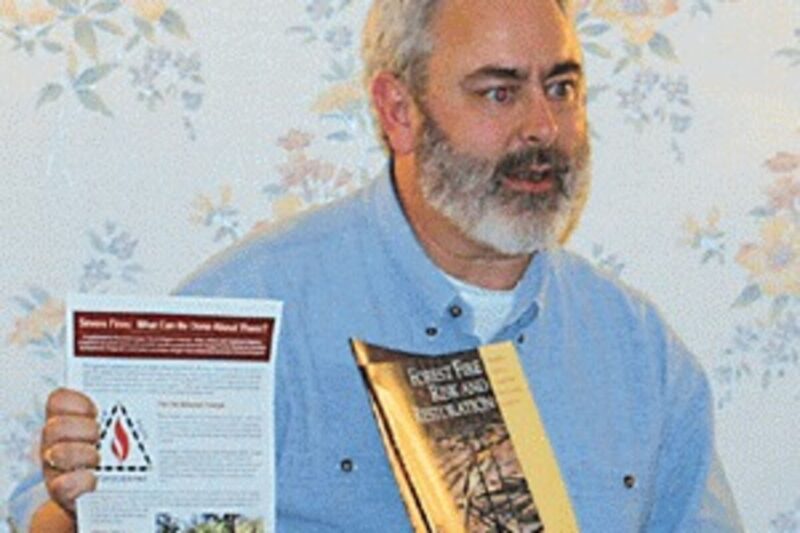Alex Paul
Aggressive forest management–including pruning, thinning, mowing and selective harvesting–could greatly improve the health and decrease chances of potentially devastating fire in Oregon’s 28 million timbered acres.
That’s what Mike Cloughesy of the Oregon Forest Resources Institute told members and guest of the Third Force for Forestry Monday in Lebanon.
“We (OFRI) base everything we do on science,” Cloughesy said. “Our goal is to educate, no advocate.”
All forests in the state are in some way tied to fires, whether they are short term events, occurring every two to 100 years or long-term, occurring every 100 to 400 years, Cloughesy said.
Those that occur every few years are usually low burning understory fires. As the impact of fire is spread over longer periods, allowing grasses, brush and fuels to increase on the ground, the degree of the fire intensity increases, Cloughesy said.
“Since about 1910, man has improved fire suppression programs to the point that forests have missed from four to 10 fire opportunities,” Cloughesy said. “Therefore, potential for major fire is high.”
Forest lands on the west side of the Cascades depend on high intensity fires to regenerate and to clear brush, Cloughesy said.
“But, in the last 50 years, we’ve become very good at fighting fires,” Cloughesy said. “From 1945 to 1985, the number of forest fires in the state went down steadily but in 1987, the number of fires began to increase.”
Decades of fire suppression had allowed fuels to build up while increased pressure from the public to curtail logging decreased the amount of thinning and other commercial activities.
“On the East side of the Cascades, years of over grazing resulted in grasses being replaced by shrubbery that burns hot and fast,” Cloughesy said.
Also impacting East side forests are the number of families living on five to 20 acres home sites.
Values at risk of fire include:
— Homes and lives
— Watersheds
— Threatened and Endangered Species habitat
— Timber and other resources
— Wilderness and special places
All fire depends on fuel, heat and oxygen but forest fires are also impacted by weather and topography.
“Fuel is the common denominator,” Cloughesy said.
Other factors in how fast and how far a forest fire can travel include surface flame height, whether the understory is covered with grasses or shrubs, height to the base of the canopy and crown density.
Methods of forest treatments include thinning, prescribed burns, pruning and mowing.
“It’s amazing how thinning can help preserve old growth by eliminating competition from numerous smaller trees,” Cloughesy said. “Studies have shown that stands of 200 year old Ponderosa pine have benefited from thinning programs.”
Pruning can be expensive, Cloughesy said, but around rural homes it must be considered.
Mowing with large flail equipment is another good method to improve grass health.
“Prescribed fire can do a good but other treatments should be tried first,” Cloughesy said. “Prescribed fire is probably good in the long-term but probably not a good treatment short-term.”
Shaded fuel breaks have also proven effective in slowing or halting forest fires, Cloughesy said.
Cloughesy said that with proper procedures, the effects of fires can be mimicked.
“We need to modify fuels, modify fire behavior and modify fire intensity,” Cloughesy said.
Cloughesy said forest managers can never get rid of fire but “we must get our forest lands in shape to deal with the impact of fires.”





